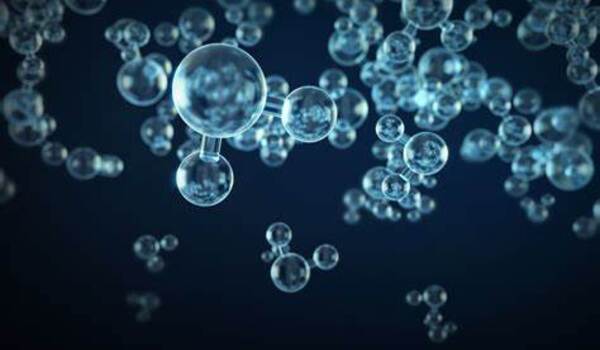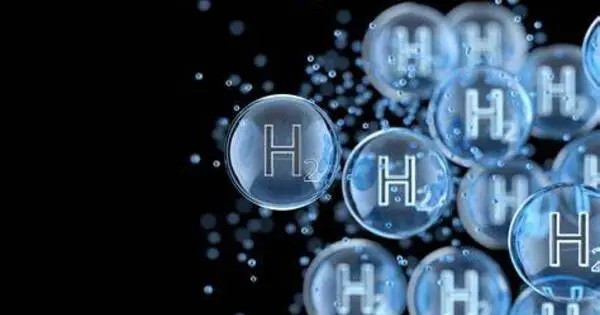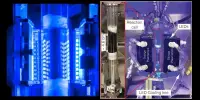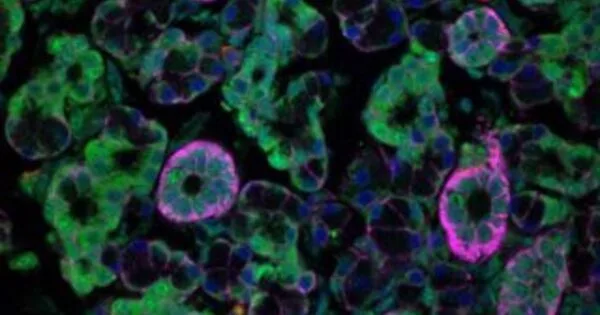A new study reveals how hydrogen gas, the energy of the future, provided energy during the beginning of life 4 billion years ago. Hydrogen gas is a clean fuel. It burns with oxygen in the air, producing energy with no CO2. Hydrogen is critical to achieving long-term energy sustainability. Though humans are only now beginning to understand the benefits of hydrogen gas (H2 in chemical shorthand), bacteria have understood that H2 is a suitable fuel for as long as life has been on Earth. Hydrogen is an old energy source. The first cells on Earth thrived on H2 created in hydrothermal vents, which was then reacted with CO2 to form the molecules of life.
Microbes that thrive on the interaction of H2 and CO2 can survive in complete darkness, occupying eerie, primordial habitats such as deep-sea hydrothermal vents or hot rock formations deep under the Earth’s crust, where many scientists believe life originated. Surprising new insights into how the first cells on Earth began to use H2 as an energy source were recently published in PNAS. The new study was conducted by a team led by William F. Martin of the University of Düsseldorf and Martina Preiner of the Max Planck Institute (MPI) for Terrestrial Microbiology in Marburg, with collaborations from Germany and Asia.
Several different theories have proposed how the environment might have pushed electrons energetically uphill to ferredoxin before the origin of electron bifurcation, we have identified a process that could not be simpler and that works in the natural conditions of hydrothermal vents.
Max Brabender
In order to harvest energy, cells first have to push the electrons from H2 energetically uphill. “That is like asking a river to flow uphill instead of downhill, so cells need engineered solutions,” explains one of the three first authors of the study, Max Brabender. How cells solve that problem was discovered only 15 years ago by Wolfgang Buckel together with his colleague Rolf Thauer in Marburg. They found that cells send the two electrons in hydrogen down different paths. One electron goes far downhill, so far downhill that it sets something like a pulley (or a siphon) in motion that can pull the other electron energetically uphill.
This process is known as electron bifurcation. In cells, numerous enzymes are required to transport electrons uphill to ferredoxin, an ancient and crucial biological electron carrier. The new study shows that at pH 8.5, which is typical of naturally alkaline vents, “no proteins are required,” explains Buckel, co-author of the study. “The H-H bond of H2 splits on the iron surface, generating protons that are consumed by the alkaline water and electrons that are then easily transferred directly to ferredoxin.”
How an energetically uphill reaction could have worked in early evolution, before there were enzymes or cells, has been a very tough puzzle. “Several different theories have proposed how the environment might have pushed electrons energetically uphill to ferredoxin before the origin of electron bifurcation,” says Martin, “we have identified a process that could not be simpler and that works in the natural conditions of hydrothermal vents.”

Since the discovery of electron bifurcation, scientists have discovered that the mechanism is both old and critically necessary in microorganisms that survive on H2. The vexing question for evolutionarily-minded chemists like Martina Preiner, whose team in Marburg studies the impact of the environment on reactions that microbes use today and may have used at the beginning of life, is how H2 was harnessed for CO2 fixing pathways before complicated proteins existed.
“Metals provide answers,,” she says, “at the onset of life, metals under ancient environmental conditions can send the electrons from H2 uphill, and we can see relicts of that primordial chemistry preserved in the biology of modern cells.” But metals alone are not enough. “H2 needs to be produced by the environment as well” adds co-first author Delfina Pereira from Preiner’s lab. Such environments are found in hydrothermal vents, where water interacts with iron-containing rocks to make H2 and where microbes still live today from that hydrogen as their source of energy.
Hydrothermal vents, both modern and ancient, produce H2 in such vast quantities that it can transform iron-containing materials into dazzling metallic iron. “It is well known that hydrogen can produce metallic iron from minerals,” explains Harun Tüysüz, a high-tech materials expert at the Max-Planck-Institut für Kohlenforschung Mülheim and study co-author. “Many processes in chemical industry use H2 to make metals out of minerals during the reaction.” The surprising fact is that nature accomplishes this as well, particularly at hydrothermal vents, and that naturally deposited iron may have played an important role in the beginning of life.
Iron was the sole metal discovered in the new study that could carry electrons in H2 upstairs to ferredoxin. However, the reaction only works in alkaline circumstances, such as those found in some types of hydrothermal vents. Natalia Mrnjavac of the Düsseldorf group, a co-first author on the paper, said, “This fits nicely with the hypothesis that life started in such conditions. The most intriguing aspect is that such simple chemical reactions can help us comprehend the intricate process of origins, and we can see those reactions working in the laboratory today under conditions similar to ancient hydrothermal vents.”
















